How to identify a faulty parking sensor. Why is the parking aid not working?
Once you wanted to find out the reasons why the parking sensors do not work. To begin with, once again we mention what kind of device it is. It is used to measure the distance between your vehicle and other objects on the road ( convenient for parking).
While driving, the parking sensors (parking radar) inform the driver about sudden threats, such as another car, or smaller obstacles, such as posts or large objects lying on the road.
But, alas, no one is immune from the breakdown of this device or simply its failure.
List of reasons why parking sensors do not work
- Glitches in the electronic control unit;
- Wiring damage(melting of the winding), as a result of which the sensor either does not work or reacts for no reason. Such a breakdown occurs when the wires loosen and get on hot mufflers, in this case it is best not to be independent, but to seek help from specialists who decide to replace the wiring themselves;
- Mechanical damage the sensor itself, is mainly due to external factors, such as ingress of stone or moisture (if there is little water, then this does not pose a significant threat);
- Breakage of the membrane (sound source), that is, the system works as before, but does not emit warning sounds. Replacing the membrane will be the only way out, besides it is quite inexpensive;
- Module failure(occurs when moisture gets inside) in this case, the malfunction can be seen by traces of water or salt on the device's microcircuit;

How to identify problems? Troubleshooting is easy enough. You just need to know how your sensor works. The parking sensors in working order emit a characteristic squeak only if there is a significant threat nearby, and if it starts to squeak regardless of the environment and movement, this is the first sign of a malfunction.
Also in many cars there are corresponding indicators that will also notify you of a radar breakdown.
Troubleshooting
Eliminate current malfunctions, everyone can try on their own, just give it a little time. And it is important to understand what and how you are doing, if not, save your time and effort by letting specialists fix the problems, which will end up being cheaper for you.
As a rule, the inclusion of parking sensors occurs at the same time as the reverse gear is engaged.. If the sensor is triggered, on the contrary, while moving forward, then this is an occasion to check your device for malfunctions, the causes of which in this case may be: a short circuit in the circuit or contamination of the sensor.
In order to correct the incorrect operation of the chamber, that is, the constant operation, also when there is no visible threat, it is enough just to check the sensitivity setting of the sensor. If it is not set correctly, contact the experts or if you can figure it out yourself, just adjust the sensitivity level to the required level.
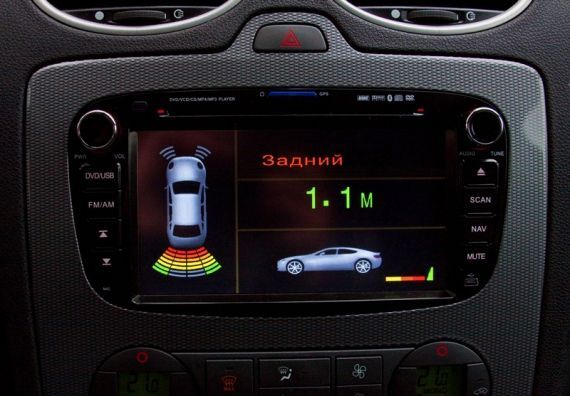
Another cause of sensor malfunction can be considered damage to the mirror of the sensor itself. In this case, there are two solutions.
First: contact a special workshop, where they will announce the price and delivery time of a new sensor from the USA (China is not worth considering at all).
Second: find the most suitable sensor in terms of parameters, purchase it and put it in place of the standard one. In this way, you will save both time and money. Also, a completely different color of the new sensor you purchased is not a problem, since it can be easily painted by simply degreasing the surface and covering it with a layer of paint.
As you could understand, the reasons why the parking sensors do not work are quite diverse, it’s not always possible to find them out on your own, you may have to turn to specialists
The parking sensor is a transceiver device. The purpose of this device is to detect an unexpected obstacle in front or behind the vehicle and warn the driver about it.
The parking sensors work on the principle of a radar. That is, the device sends in all directions sound signal, ultrasonic frequencies are commonly used.
The signal, bumping into an obstacle, is reflected from it and returns to the parking sensors receiving device. In the parking sensors control unit, the signal is processed and the driver is warned about the obstacle that has arisen.
Structurally, the parking sensors are made in three versions:
- In the first case, it consists of a control unit, sensors, connecting wires.
- In the second case, there are no wires.
- In the third, instead of sensors, a metallized tape is used. It is believed that such tape parking sensors are devoid of dead zones. It is installed on the inside of the bumper.
Most often, parking sensors are installed on passenger vehicles. It happens that parking sensors are also installed on warehouse self-propelled carts. Installing such a device on a trolley facilitates and speeds up the movement of goods across the warehouse area, especially in warehouses with large territories and with a huge volume of processed cargo.
You can find out about practical guide: how to put sensors, equipment and conduct testing.
The main malfunctions of the parking sensors
It does not matter on what equipment the parking sensors are installed, on a car or on a warehouse cart, the malfunctions are, in principle, the same, except for minor minor damage associated with the specifics of the car or cart.
- The first trouble that can happen to the device is a factory defect. In this case, there is only one way to solve the problem - return the device to the manufacturer and get a new one.
- Parktronic malfunctions most often occur in connecting wires, sensors or a metallized tape, more precisely at the place of its attachment to the bumper of a technical device.
- Much less often, a malfunction occurs in the parking sensors control unit. It must be said that the control unit is equipped own system fault definition. If it has detected a malfunction, the driver is given an appropriate signal.
- With sensors or parktronic tape, troubles associated with water and dirt can happen. The sensor can also damage a stone caught in it. The parking sensors tape must be constantly cleaned of dirt and moisture. To do this, you have to remove it and clean it, it is worth cleaning the bumper at the same time. The sensor is not particularly afraid of moisture and water, but, having accumulated, moisture or water can disable it.
- The control unit most often fails if dirt, dust, moisture get on the printed circuit. A short circuit may occur. Block failures are rare. Define the simplest, for example. short circuit, a malfunction can be done by yourself. The rest depends on the skill and knowledge of the owner of the parking sensors.
- Parktronic wiring can become unusable if the wires are loose. As a result, they may melt or break. You can call and replace the wiring or part of it yourself.
Diagnostics and repair options
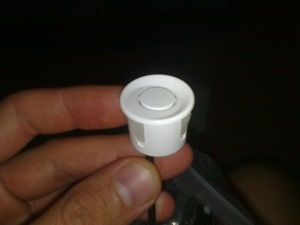 The system must respond to the emerging obstacle. If this does not happen, then the first thing to do is to clean the sensors or tape from dirt and moisture. They are very often the cause of a malfunction of the device.
The system must respond to the emerging obstacle. If this does not happen, then the first thing to do is to clean the sensors or tape from dirt and moisture. They are very often the cause of a malfunction of the device.
You also need to clean up the places where they are located. That is, the inside of the bumper under the tape and the sockets in which the sensors are installed. It does not help - we inspect the transceiver devices.
If there is no damage on the metallized tape, then the cause of the malfunction of the tape parking sensors is in other parts of the device.
To determine the health of the sensor - you need to touch it with your finger. A good sensor vibrates slightly. When touched, a slight crackling sound is heard. The test is carried out with the vehicle engine running.
When a non-working sensor is identified, it should first be dried, perhaps moisture just got into it. If so, then after drying it will start working normally, if not, we will open it, it is possible that the membrane is damaged, it can be replaced. But entrust the replacement of the membrane better master because this job requires skill.
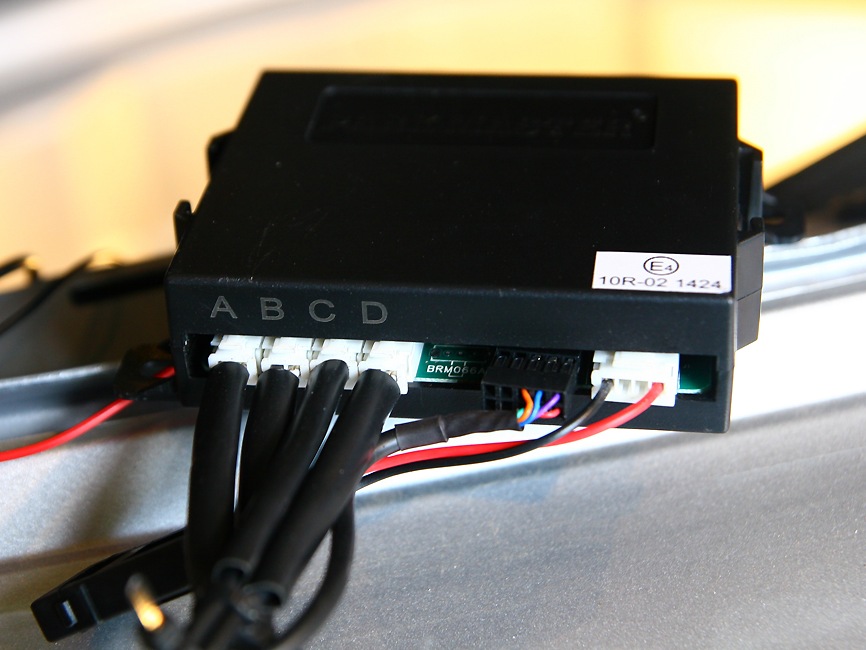 A malfunction of the parking sensors control unit is probably the biggest trouble with this device. You can only visually inspect the device yourself and check it for a short circuit. To inspect the printed circuit board of the device, you need to remove the cover.
A malfunction of the parking sensors control unit is probably the biggest trouble with this device. You can only visually inspect the device yourself and check it for a short circuit. To inspect the printed circuit board of the device, you need to remove the cover.
It is possible that during the inspection the cause of the malfunction will also be established, for example, a coating of dirt or dust, or scale. Scale may indicate worn-out radio components, such as capacitors.
Checking for a short circuit is easy. You need to take a simple ohmmeter and touch the ends of the probe to the terminals of the block, if there is an open circuit in the device or it is shorted, then the ohmmeter will show either zero or infinity. In this case, the intervention of a qualified specialist is necessary. It is worth taking on the repair of the control unit yourself only if you have experience in working with electronic circuits of various types.
The most common malfunctions and their solutions
- Reverse gear is on, but the parking sensors do not give a signal. It is possible that the control unit is not connected to power or incorrectly mounted, wiring is broken. In this case, we change the connection scheme, restore the integrity of the wiring. Be sure to check whether the grounding of the unit is reliable.
- The distance to the interference is determined incorrectly. It is possible that there is contamination of the sensors. You need to clean the sensors.
- The device often works on non-existent obstacles. It is possible that the parking sensors are set to high sensitivity or there is contamination of the sensors. It is necessary to reconfigure the control unit or clean the sensors.
- Parktronic does not detect any interference at all. It is possible that the device is set to low sensitivity, the sensors are again dirty or the interference is in the so-called dead zone of the parking sensors. It is necessary to either increase the sensitivity of the device, or clean the sensors, rebuild the sensor installation scheme, add, for example, a few more pieces to the existing circuit.
- The same malfunctions occur as the parking sensors with sensors. The parking sensors tape may be damaged. Malfunctions can also occur if the location of the tape is contaminated. There are malfunctions of the connecting wires and the parking sensors control unit. The steps for diagnosing a device and repairing it are, in fact, the same as when working with other types of parking sensors.
If it is not possible to independently determine the cause of the malfunction, then, of course, you need to contact specialists. You can remove the parking sensors and take it to a car repair shop, you can drive the equipment with the installed device there - drive the parking sensors on the stand, check the settings, etc.
How to avoid parking sensors malfunctions?
 First of all, you need to follow basic safety measures. Sensors, metallized tape, wires, contacts should be regularly inspected; if dirt appears on the sensors and tape, then it must be removed, as well as moisture.
First of all, you need to follow basic safety measures. Sensors, metallized tape, wires, contacts should be regularly inspected; if dirt appears on the sensors and tape, then it must be removed, as well as moisture.
No moisture or dirt should accumulate under the metallized tape. Therefore, it is necessary to periodically remove it and clean the inside of the bumper.
Dirt can also accumulate in the control unit, and it is sometimes worth opening it and cleaning it from dirt and dust accumulated inside. Please note that dirt, dust and water are excellent conductors of electricity, which means that they can cause a malfunction.
It is necessary to strictly follow the recommendations and requirements set forth in the operating instructions for the parking sensors. It is very important to correctly install and select the device, as well as to fine-tune it. Detailed information you can find out about the choice of parking sensors in a detailed article. Compliance with instructions correct installation, fine tuning parking sensors are the key to its long trouble-free service.
I don’t hear a click from behind or how to check the parking sensors sensor? Today, many people cannot imagine parking without this assistant. Not because it's cool to have such a device, but because it really helps in the most incredible situations. Even a schoolboy can park a car with it, without exaggeration.
A variety of types and forms make it more and more popular. A structurally simple mechanism can be installed without problems even by someone who is more or less familiar with electronics, of course, we do not take into account top models with a bunch of bells and whistles, where the only road is to a car service. But sometimes it happens that the device can break, however, like everything else in this world. How to identify a breakdown, how to fix it, we will consider in detail in the instructions below.
Device Diagnostics
How to check the parking sensors? There are many ways to check, ranging from the simplest, ending with connecting a PC to search. It all depends on the extent of the damage.
The easiest method: engineers assure that if you come close to the device, then it makes a click in good condition. Who was too lazy to bend down thought of bringing the phone with an activated voice recorder, and then listened to the recording.
To do this, you need to turn the key to the "start" mode, squeeze the handbrake, turn on the reverse speed without fail. As you can see from the description of the time spent, well, a maximum of 2-3 minutes and it's in the bag.
« Attempt #2": depending on the type of device, it is necessary to turn on the neutral, squeeze the handbrake, start the car without fail. Run your fingers over the sensors in front, behind, or both. In working condition, they emit vibration, I emphasize that not everyone has such an installation.
The conclusion is simple, if you feel it, then everything is in order, otherwise diagnostics are necessary.
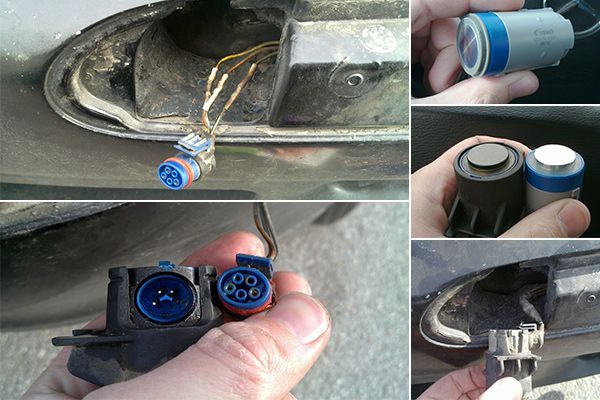
We use equipment called "VAG", it makes no sense to describe, since it is structurally a very complex mechanism for professional service stations.
I must say right away that instability in work can be noticed during sudden temperature changes. When the gadget does not work in the cold, but a little warmer, and again in the ranks. It is recommended to immediately change these, since they do not have long to “live”. In addition, if for some reason your car got a stone in the area of the side view mirror, you already know the parking sensors. out of order. Nobody says that he is not a worker, just a loss of orientation. You can check at the next parking, it will give a false signal about an obstacle.
Do-it-yourself repair
If we finally decided to fix the problem ourselves, then let's give the main sources:
- Mechanical damage as a result of an accident or impact;
- Manufacturing defects;
- Problems with electrical wiring;
- Consequences climatic conditions operation.
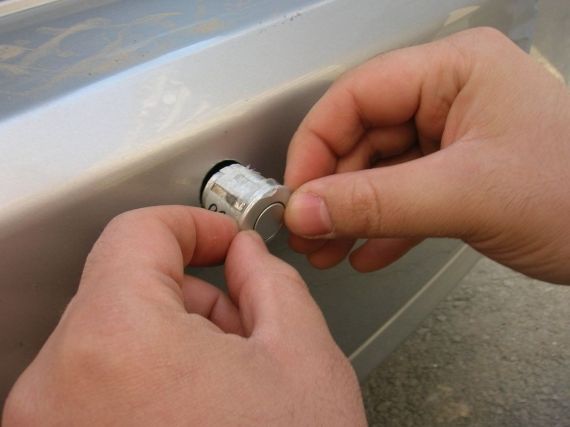
This is, of course, an approximate list, in a different situation it may be modified. So, first of all, we need to listen to a non-working sensor and purchase the same one in a car shop or car market, only in good condition. I must say right away that no one will sell you piece by piece, it is not economically profitable for sellers, be prepared to purchase as many as 3 pieces, the minimum quantity
In the garage, turning off the engine is mandatory, remove the positive terminal from battery so that there is no short circuit, and the system rebooted. Install the new sensor in place, after connecting the electrical wires. You can test the device.
We note right away that some manufacturers paint parking sensors in the color of a car, so be prepared
If until recently parking sensors were considered a luxury, then in conditions big city where finding a parking space is quite difficult, it has become a necessity. If the parking sensors do not work, then for those who are used to using them, this is a real problem. The article discusses the main malfunctions of the device, ways to check the sensor, gives instructions on how to disable, remove and replace the device in your car.
Common malfunctions of parking sensors and its components: causes and symptoms
Parktronic is a salvation if there is very little space for parking. Its sensors give warning signals to the driver if there is an obstacle in the form of a fence or other vehicle. The closer the obstacle, the stronger the signal.
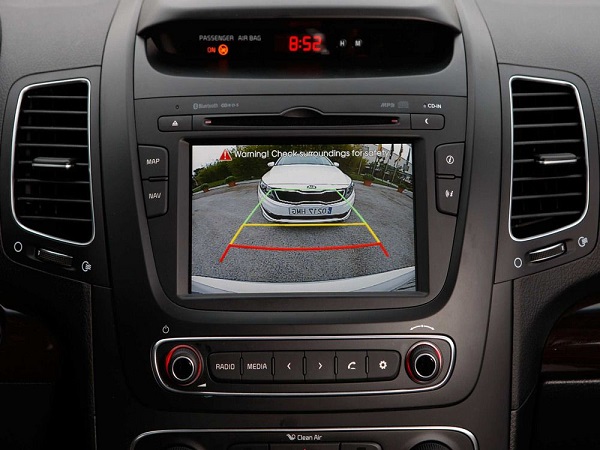
Motorists quickly get used to trusting a device that signals danger. But if the parking sensors do not stop beeping, even if there is no obstacle, then parking is difficult, and urgent repair of the device is required.
Before you figure out why the parking sensors do not work, you need to know the principle of its operation. It detects obstacles using sensors that send ultrasonic waves in different directions from the car. Hitting obstacles, the waves return in the form of an echo, and the ECU and speaker warn the driver of the danger.
If the parking sensors are buggy, then the most common cause is a malfunction of some kind of sensor.
All faults can be divided into three groups:
- damage to sensors or their contamination;
- faulty computer;
- wiring damage.
Methods for diagnosing a parking sensor
If the parking sensors are installed from the factory, then the indicator on the instrument panel will light up, signaling a sensor malfunction. The question arises, how to check the parking sensors if there is no indicator. A sign of a broken one will either be a constant squeak, or its absence when approaching an obstacle. To find out why the parking radar does not work, you need to diagnose its components.
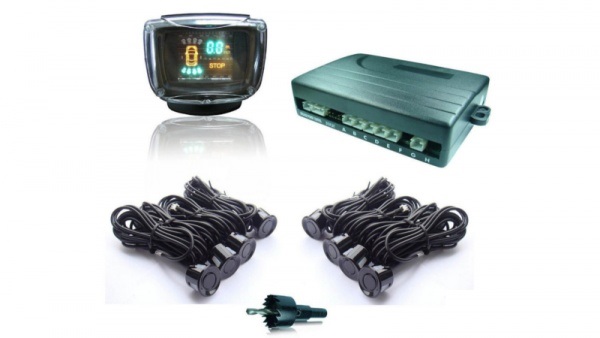
The device consists of:
- The control unit, thanks to which the operation of the entire acoustic parking system is carried out. It can be checked with an ohmmeter by attaching the terminals of the device to the outputs. If the ECU is faulty, the tester will not show anything.
- Display devices: screen and sound alarm. They do not often break, as they are in the cabin and are rarely damaged.
- Sensors and metallized plates. Thanks to them, obstacles are revealed. They are installed on the front and rear bumper. This allows you to control the space both behind the car and in front.
Sensors are most susceptible to damage, as they get stones, dirt, water and snow (the author of the video is STO Garazhok).
Features of parking sensors repair
If the parking sensors are constantly beeping, then the following reasons are possible:
- Sensors are dirty. In this case, they need to be inspected and cleaned.
- If cleaning does not help, it is possible that the problem is in the wiring. In this case, you need to ring the wiring and eliminate breaks if they are found.
- It happens that the device beeps in the cold. The reason for this is water that got inside the device and froze. The way out of this situation is to dry the sensors.
- The last reason why the parking device beeps continuously may be the incorrectly configured sensitivity of the sensors. They incorrectly estimate the distance to the obstacle and therefore constantly squeak. The solution is simple - adjust the sensitivity correctly.
If the parking radar has stopped working, then you should first understand which sensor does not respond to an obstacle. The defective device must be replaced.
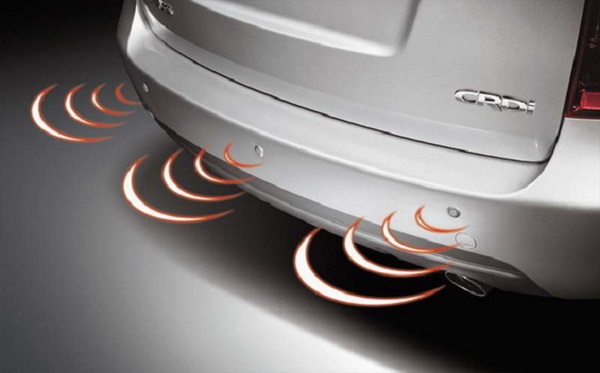
If all sensors are working, and the device does not beep, you should try to increase the sensitivity.
The most expensive and unpleasant malfunction is the breakdown of the computer. A new control unit, like repairs, is an expensive pleasure.
Instructions for dismantling and replacing the device
The need to replace the sensor arises if a stone has fallen into it. Even a small pebble can break the mirror of the device. In this case, it cannot be restored. There is only one way out - replacement with a working device.
Replacing the sensor at a car service in most cases is very expensive, so it’s easier to buy a new device and repair the parking sensors yourself.
It is important, when choosing a sensor, to select one that fits exactly in size and characteristics.
The replacement procedure is simple. Before removing the sensor, you need to disconnect the wires from it. After turning off the power, you can remove the old device. Then you need to take a new sensor, attach the wires and fix it on the inside of the bumper.
It is possible that the old and new device will differ in color. Their design allows the application of a small amount of paint. Therefore, they can be painted in any suitable color. Before painting, the surface should be degreased so that the paint lasts longer.
The number of cars is constantly increasing, so drivers are experiencing more and more difficulties with parking a vehicle. If twenty or thirty years ago the streets were not overloaded with cars, and it was possible to park without difficulty, today it is quite difficult to park a car within the city, especially in the center. To simplify the task of parking for drivers and reduce the likelihood of a collision with an obstacle, parking sensors are used that react to an object.
Definition and functions of parking sensors
Parktronic is a special device that warns the driver about the appearance of an obstacle in front or behind the car. This device is arranged on the principle of radar - it works thanks to information received from the reflection of ultrasonic waves.
The parking radar is designed to facilitate the parking process in case of limited maneuverability
The design of the unit includes the following elements:
- electronic control unit;
- liquid crystal display;
- one distance scale;
- two distance scales;
- two scales and a digital distance indicator;
- parking sensors.
Parktronic sensors are busy receiving information about the appearance of an obstacle. They generate ultrasonic waves, which, encountering an obstacle, return back. As a result, the driver receives a signal that there is a possibility of a collision. Special indicators show the distance to the obstacle, and the sound signal becomes more intense as you approach it.
Parktronic sensors can be in quantities from two to six. The greater their number, the higher the accuracy of the information received. A device with two sensors is one of the cheapest, however, and its accuracy is not high. There is a possibility of the formation of "blind zones", in which the device may not detect a small obstacle, for example, a vertically standing narrow column.
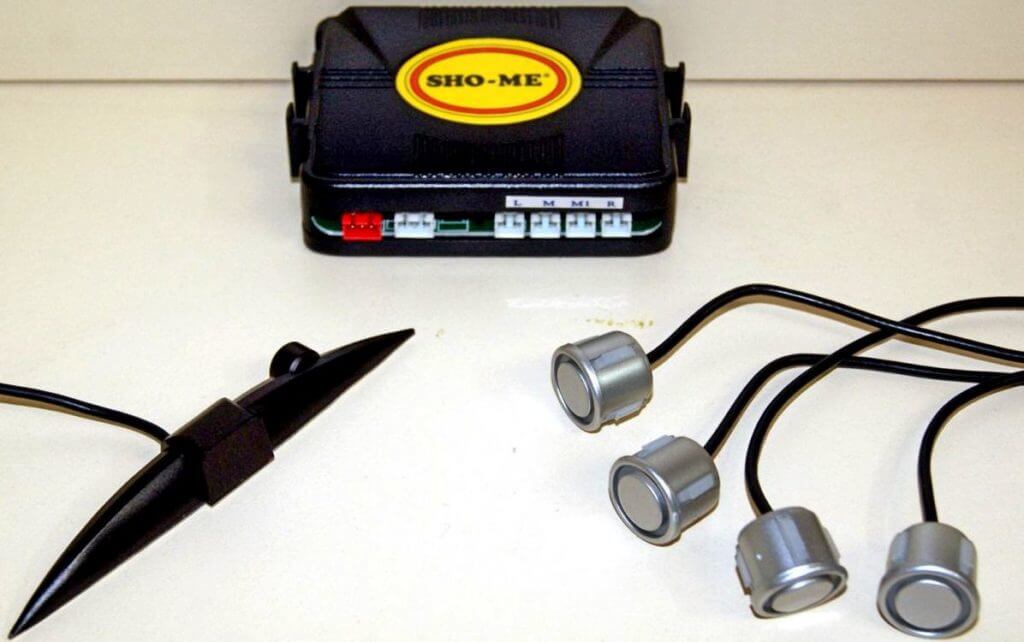 Its main task is to signal the driver about the presence of obstacles when moving backward or forward, in the event of this obstacle in the so-called. "dead" zone
Its main task is to signal the driver about the presence of obstacles when moving backward or forward, in the event of this obstacle in the so-called. "dead" zone Three or four is the most common option, where the balance of price and quality is optimally maintained. IN this option There are no "blind spots" and this type of device is accurate enough to ensure safe parking.
Six pieces are placed on the front and rear bumpers cars - this avoids a collision not only from behind, but also from the front. There are systems in which it is possible to switch to a separate operation of the front or rear of the device.
The device, where the parking sensors are located in the amount of eight pieces, is expensive, but it provides adequate protection against a collision. In order not to distract the driver while driving, the parking sensors turn off after the start of the movement and are activated only when the brake pedal is pressed. There are models where activation does not occur automatically, but after the driver presses the appropriate button.
Fastening methods
Parktronic sensors can be attached to the car bumper in two ways:
- mortise;
- overhead.
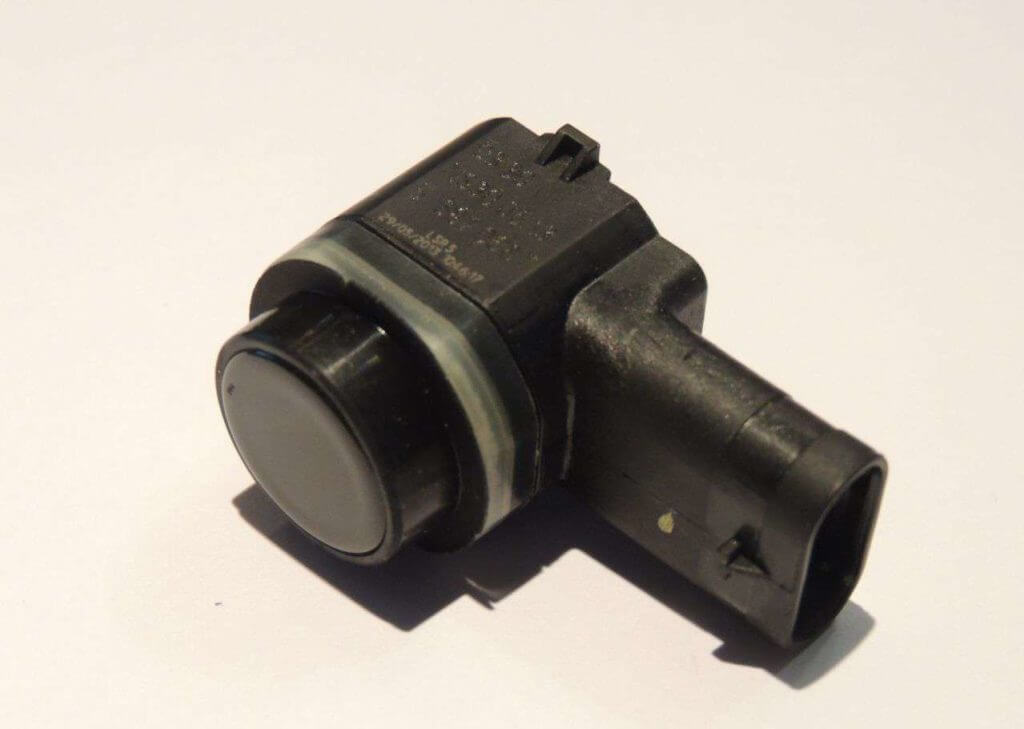 When deciding for yourself which parking sensors to choose, do not miss one important point- activation of parking sensors
When deciding for yourself which parking sensors to choose, do not miss one important point- activation of parking sensors In the first method, they are inserted into special holes that are cut into the bumper. This is a common mounting method because it is reliable and efficient.
With the overhead method, fastening is carried out by gluing, which does not provide reliability. during washing or strong vibration there is a possibility of losing one of the elements.
Parktronic sensors must be mounted at a height of more than 50 centimeters. Otherwise, they may perceive the road as an obstacle. Their position must be strictly horizontal, therefore, in the case of an inclined bumper, special spacer rings are necessary.
Obstacle signals
The system can notify you of the presence of obstacles by sound and visual means. The sound notification consists of a beeper signal, the height and intensity of which increase as the distance to the obstacle decreases.
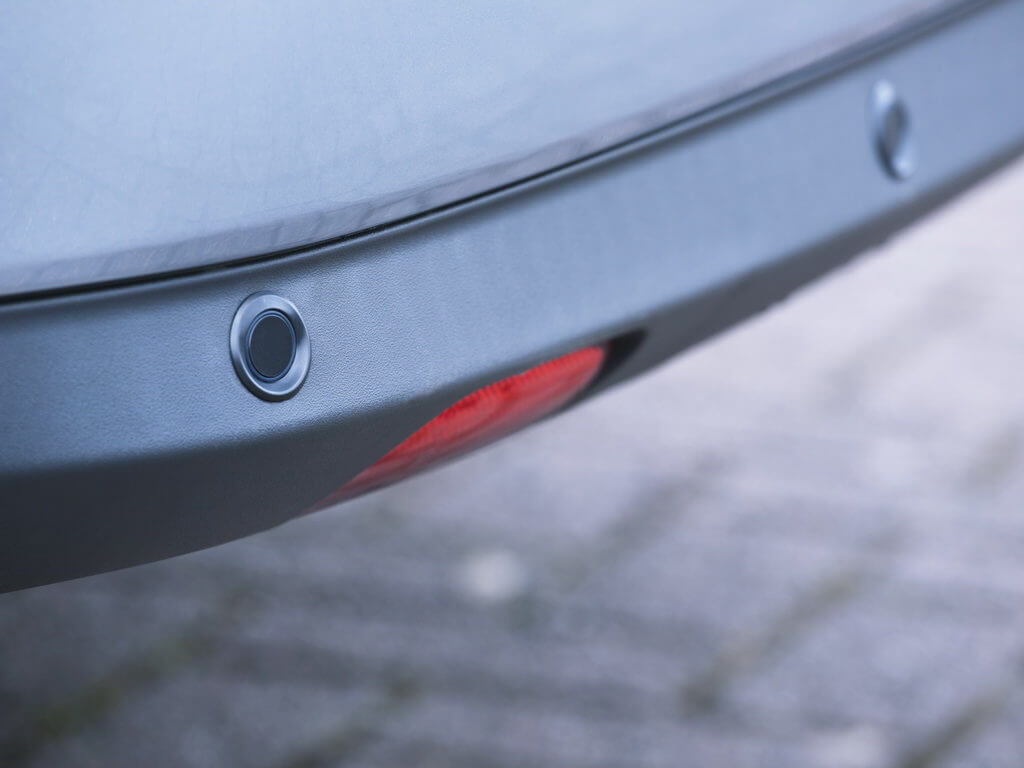 The main function that this performs automotive device– detection of obstacles and obstacles that have arisen in front of the car
The main function that this performs automotive device– detection of obstacles and obstacles that have arisen in front of the car Visual alerts are as follows:
- LEDs that change color depending on the distance to the obstacle. A green signal indicates that you can move freely, orange - indicates a danger in the visibility zone, red - an alarm signal that warns of the immediate proximity of an obstacle.
- The scale, the number of divisions on which shows the distance to the object. Systems are produced containing 2 scales: one shows the right side, the other - the left.
- Liquid crystal display. The cost of the system equipped with it is quite high. Some companies offer devices with rear-view cameras - they give very high control accuracy.
- Projection on Windshield. The advantage of this option is that the driver has the opportunity to simultaneously monitor the road and see the distance to foreign objects. The disadvantage of such systems is the high cost.
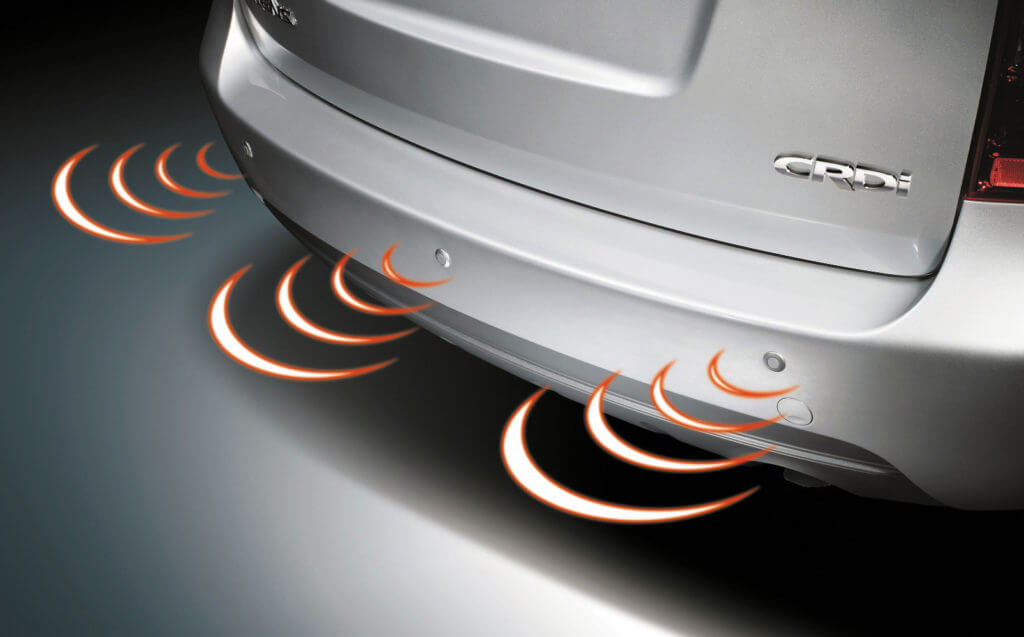 Parktronic sensors deliver an ultrasonic pulse, which is reflected from an obstacle at a certain distance and returns back
Parktronic sensors deliver an ultrasonic pulse, which is reflected from an obstacle at a certain distance and returns back Advantages and disadvantages
Automatic parking, like any other device, has advantages and disadvantages. Some drivers argue that it makes no sense to install it on a car, since there were enough rear-view mirrors in the past. This is fundamentally wrong, because in the old days, technology did not give drivers as many options as they do today.
The presence of automatic parking in the car provides the driver with the following advantages:
- the ability to park even where there is little space;
- accident prevention in bad weather, when icy or misted windows do not provide a full view and visibility is limited;
- if a pedestrian suddenly appears behind, the driver can brake urgently;
- It is much easier for unconfident motorists to avoid damage to the car.
Of the shortcomings of such devices, one can only name that the recognition of obstacles is not always correct. This happens in the following situations:
- the slope of the road is sometimes perceived as an object;
- rain and fog can reflect ultrasonic signals, misleading the driver;
- a fur coat absorbs signals without reflecting: parking sensors may not detect a pedestrian in fur clothing.
Health check
Sometimes motorists wonder how to check the parking sensors if there are doubts about the performance of the system elements. There are two common ways to quickly find out if everything is in order:
- The operating element makes clicks. To check, turn the key to the starting position, apply the handbrake and transfer the car to reverse gear. If it is inconvenient or too lazy to bend over, bring the phone with the voice recorder turned on to the element, and then listen to the recording. The presence of clicks will tell you that everything is in order.
- The operating elements vibrate slightly to the touch. To make sure they work, you should lightly touch and run over them. index finger. If you feel a vibration, then the system is working.
Regularly checking the health of the system is a sure way to avoid trouble when the automation you rely on fails.




